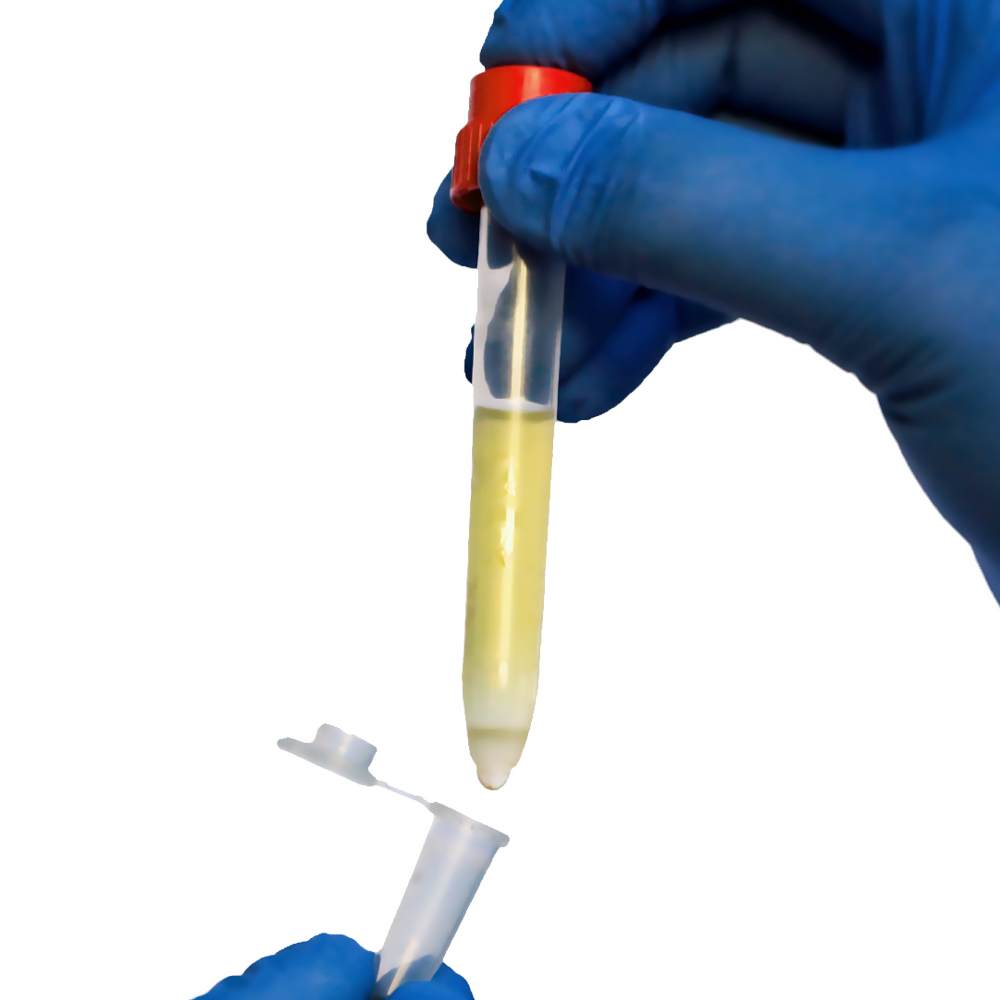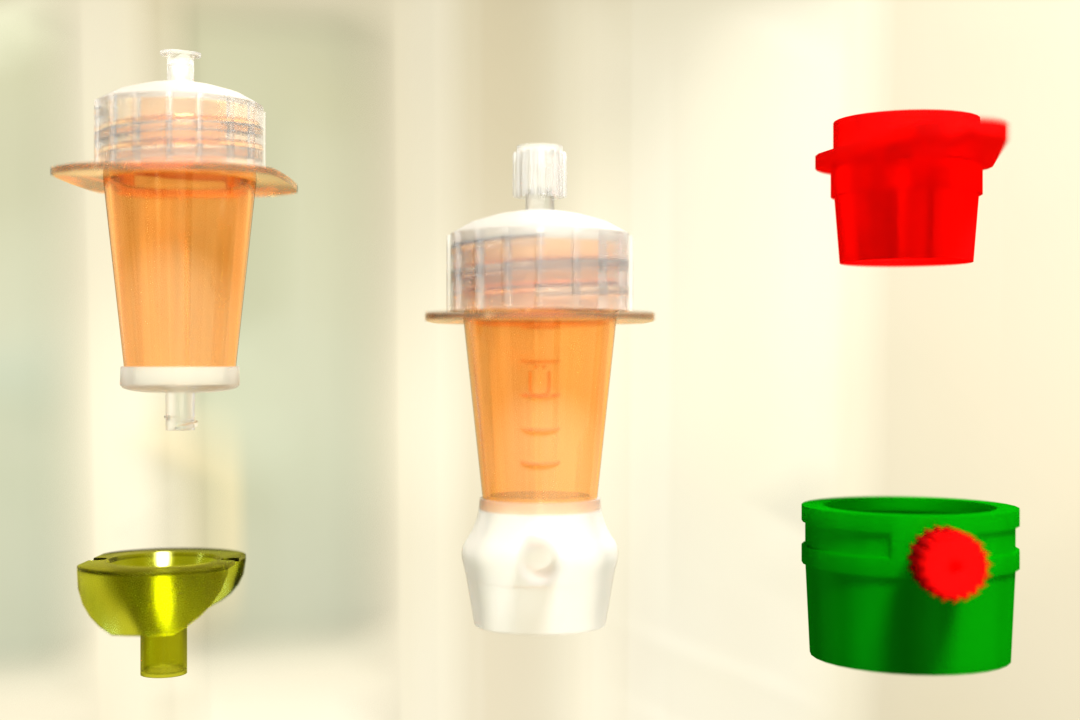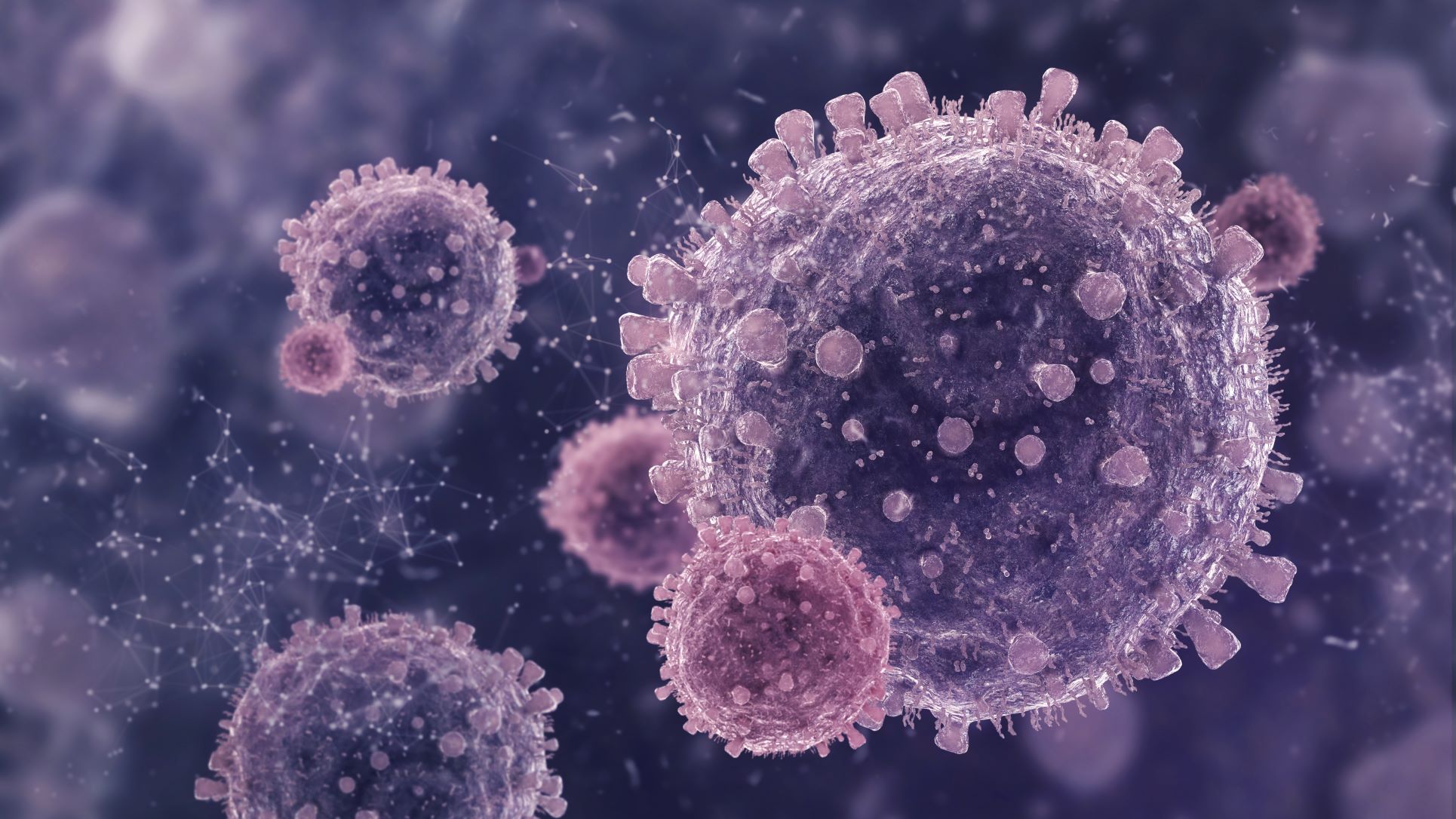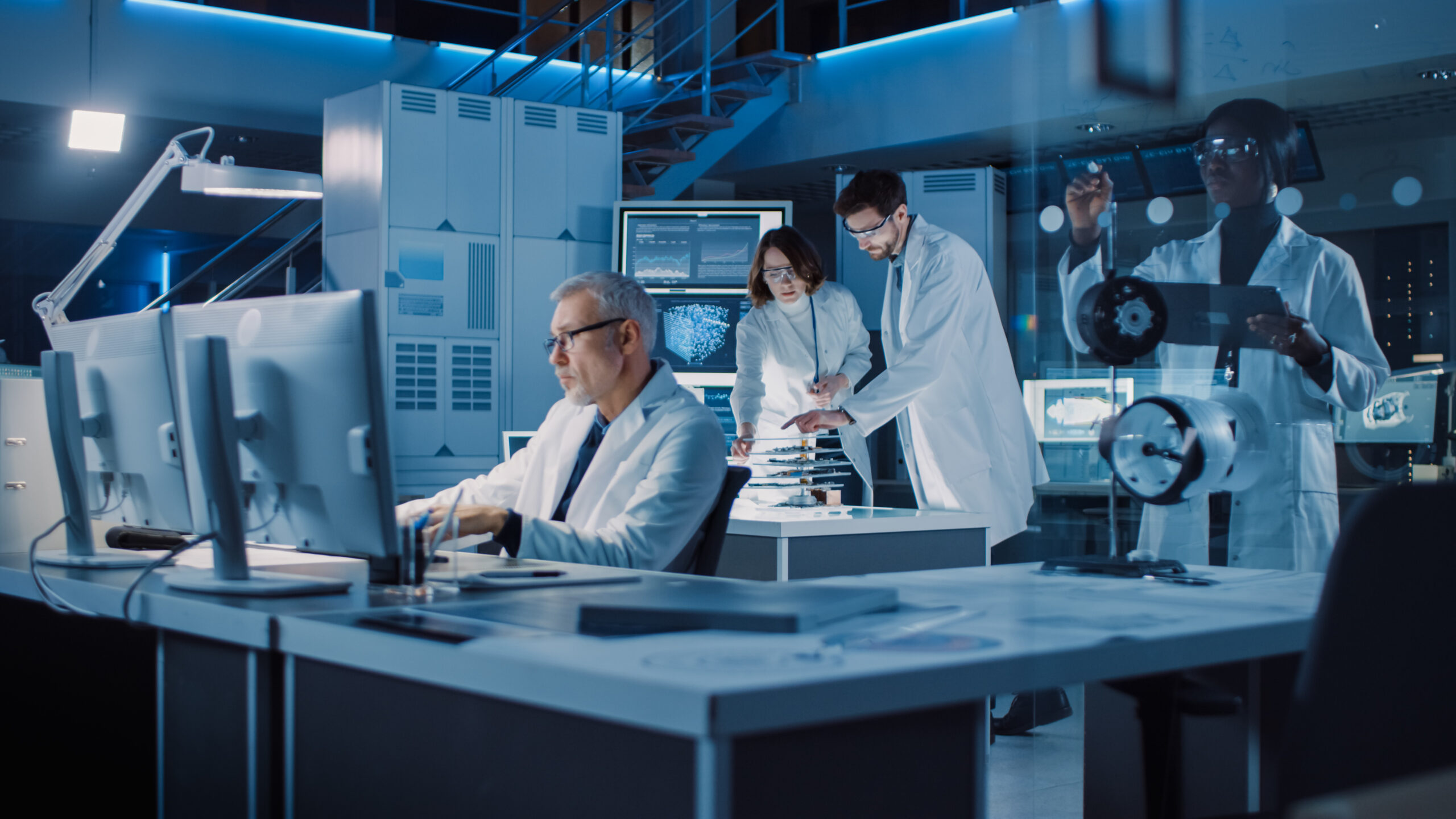Efficient sample preparation is a critical factor in achieving high-quality, reliable results in laboratories that focus on cell cultures, tissue processing, or flow cytometry. Whether isolating primary cells from complex tissues or preparing single-cell suspensions for analysis, the tools used during these processes can make or break an experiment. Selecting the right equipment is essential for accuracy, consistency, and speed. Among the best available tools for these tasks is the UberStrainer.
More than just a cell strainer, UberStrainer is a modular sample preparation device that enhances tissue dissociation workflows, saves time, and boosts overall efficiency. With its customizable design and a variety of mesh sizes, the UberStrainer is capable of precise cell separation, isolation, and concentration from complex or diluted suspensions. The device features an airtight screw cap with a Luer Lock connector, allowing for the filtration of unlimited liquid volumes, while its compatibility with different tube sizes—from 1.5 ml to 50 ml—ensures flexibility across various laboratory setups.
This article explores why UberStrainer is a game-changer for high-volume tissue dissociation and how it can improve routine lab procedures. Whether it’s streamlining tissue dissociation or optimizing cell isolation for flow cytometry, the UberStrainer promises to increase lab efficiency, enhance experimental outcomes, and save valuable time. Read on to find out how incorporating this innovative tool into your lab can elevate your sample preparation process.
What is UberStrainer?
UberStrainer is a sterile, single-packed sample preparation device engineered for versatility and high performance. Unlike conventional strainers, UberStrainer features a modular design with a secure screw cap and a Luer Lock connector. This combination allows researchers to filter an unlimited amount of liquid without risking contamination or loss of material.
Its design ensures compatibility with 1.5 ml, 2 ml, 15 ml, and 50 ml tubes, and it fits perfectly into a 20 mm tissue plate cavity. Additionally, UberStrainer is centrifugable and can work under low-pressure conditions, making it highly adaptable for various lab environments.
Available in 15 different mesh sizes, UberStrainer allows researchers to optimize filtration based on the sample type, ensuring maximum recovery of viable cells.
The Importance of High-Volume Tissue Dissociation
Tissue dissociation is the first and often the most critical step in preparing a single-cell suspension from solid tissues. Whether you are working with bone marrow, thymus, pancreas, or other complex tissues, efficient dissociation ensures that the cells remain viable, intact, and ready for downstream applications.
In high-volume dissociation, the stakes are even higher. Processing larger samples without damaging the cells or losing material to inefficient filtration tools can be challenging. Traditional strainers often clog, leading to extended processing times, increased contamination risk, and reduced yields.
This is where UberStrainer comes into play, offering a system designed specifically to handle large volumes while protecting sample integrity.
How UberStrainer Improves Tissue Dissociation Workflows
UberStrainer brings several key improvements to tissue dissociation and cell preparation workflows:
1. Uninterrupted Processing of Large Volumes
Thanks to its Luer Lock connector and screw cap, UberStrainer can process an unlimited volume of liquid. Traditional strainers often require manual emptying and refilling, creating bottlenecks. With UberStrainer, researchers can continuously filter large volumes without interruption, making it ideal for high-throughput labs.
2. Versatile Compatibility Across Tube Sizes
UberStrainer fits easily into common lab tubes (1.5 ml, 2 ml, 15 ml, and 50 ml), providing flexibility during experiments. Researchers can transition between different sample volumes without needing additional adapters or setups, streamlining the workflow.
3. Gentle Handling of Cells
Cell viability is critical during tissue dissociation. UberStrainer is designed for low-pressure compatibility, ensuring that cells are filtered gently without mechanical stress that could lead to cell death or functional changes. This gentle filtration is particularly important when preparing samples for sensitive downstream applications like flow cytometry or cell culture.
4. Optimal Mesh Size Selection
With 15 available mesh sizes, UberStrainer offers unmatched customization. Different tissues and cell types require specific mesh sizes to balance efficient separation with high viability. Having this range of options allows researchers to fine-tune their protocols for the best outcomes.
5. Centrifugation-Ready Design
After filtration, samples often need to be centrifuged. UberStrainer’s durable design withstands centrifugation without compromising sample integrity. This feature eliminates the need to transfer samples between filtration and centrifugation steps, reducing handling and minimizing potential cell loss.
Common Tissue Types Processed with UberStrainer
UberStrainer is designed to meet the challenges of working with complex tissue samples. Some of the most common tissues successfully processed with UberStrainer include:
Bone Marrow: Efficient isolation of hematopoietic and stromal cells without clogging or excessive cell loss.
Pancreas: Gentle dissociation for isolating islet cells and other critical populations.
Thymus: Preparation of single-cell suspensions for immunological studies and T cell research.
Solid Tumors: Extraction of viable cells from dense and fibrous tumor tissues.
Spleen: Recovery of immune cells with high viability and minimal mechanical stress.
Lung Tissue: Single-cell isolation for respiratory research, preserving fragile epithelial and immune cells.
By supporting a wide range of tissue types, UberStrainer becomes an indispensable tool for researchers working across oncology, immunology, regenerative medicine, and many other fields.
Key Applications of UberStrainer
UberStrainer is not limited to just one type of sample. It supports a wide range of laboratory applications, including:
Preparation of single-cell suspensions from bone marrow, thymus, pancreas, and other tissues.
Dissociation of solid tissues for primary cell isolation.
Filtration and enrichment of cells for cell culture.
Sample preparation for flow cytometry, ensuring clear, debris-free suspensions.
Target cell enrichment using technologies like pluriBead cell isolation.
The ability to support such a wide range of processes makes UberStrainer an invaluable asset for any lab focused on cellular research.
Why Traditional Strainers Fall Short
Conventional strainers, while useful, often have significant drawbacks when handling large tissue samples:
Frequent clogging: Standard strainers can clog quickly when filtering viscous or particulate-rich samples.
Limited volume: Many are designed for small volumes and cannot handle large sample loads without constant supervision.
Sample loss: Rough handling and inefficient design often lead to significant cell loss.
Incompatibility with centrifugation: Many traditional strainers are not designed for use during centrifugation, requiring additional steps that waste time and risk contamination.
UberStrainer addresses all these pain points, offering a seamless, efficient solution built specifically for high-volume work.
How UberStrainer Enhances Research Outcomes
Using UberStrainer consistently leads to better research outcomes by:
Improving sample quality: Cleaner suspensions mean fewer artifacts in downstream assays.
Reducing hands-on time: Less manual intervention means researchers can focus on other critical tasks.
Increasing reproducibility: Standardized filtration processes lead to more reliable results.
Enhancing cell viability: Gentle processing preserves cell functionality for downstream applications like flow cytometry, culturing, and molecular analysis.
When sample quality directly impacts the validity of experimental results, investing in a reliable cell strainer like UberStrainer becomes essential.
Comparing UberStrainer to Other High-Volume Filtration Solutions
In many laboratories, high-volume tissue dissociation and sample preparation are still handled using basic mesh filters, nylon cloths, or improvised setups. While these methods can work for small or less sensitive samples, they often fall short when researchers need consistent, reliable results on a larger scale. This is where the UberStrainer sets itself apart from traditional options.
Unlike basic mesh sheets or funnels that require manual handling and repeated adjustments, the UberStrainer is designed specifically for laboratory efficiency. Its airtight screw cap with a Luer Lock connector allows for easy attachment to syringes, pumps, or filtration systems, enabling continuous processing without risking contamination. The UberStrainer also supports centrifugation, helping researchers accelerate separation processes while maintaining sample integrity.
Where standard strainers may clog quickly with tissue fragments or viscous samples, UberStrainer’s modular design and availability in 15 different mesh sizes help prevent workflow disruptions. Researchers can select a mesh size that suits their specific sample type, whether working with blood, bone marrow, tumor tissue, or cultured cells.
Additionally, many traditional setups are limited in the volume they can process at once. The UberStrainer, by contrast, is built to handle unlimited liquid volumes due to its low-pressure compatibility and durable construction. This makes it ideal for labs processing large, complex samples where quality and time matter most.
By investing in a purpose-built tool like UberStrainer, labs move beyond makeshift solutions, reduce variability in results, and streamline their operations. The upgrade not only saves time but also protects the integrity of precious samples, ultimately supporting better research outcomes across a wide range of applications.
Practical Tips for Using UberStrainer Effectively
To maximize the benefits of UberStrainer, labs should consider a few practical tips:
Choose the right mesh size: Base your choice on the tissue type and target cells you are isolating.
Pre-wet the mesh: This can help prevent cells from sticking to the filter.
Use low-pressure techniques: Applying too much force can damage delicate cells.
Centrifuge gently: Follow manufacturer recommendations to maintain structural integrity.
Maintain sterile technique: UberStrainer is sterile and single-packed—handle it carefully to preserve sterility during setup.
Following these tips ensures that UberStrainer delivers optimal performance in every experiment.
UberStrainer and Sample Integrity: A Winning Combination
Sample integrity is non-negotiable in modern laboratory work. Whether isolating immune cells, preparing samples for sorting, or processing tissues for organoid development, maintaining the health and identity of the sample is paramount.
UberStrainer’s unique design minimizes handling steps, reduces the chances of contamination, and maximizes the recovery of viable, functional cells. Researchers can work with confidence, knowing that the tool they are using supports their scientific goals rather than hindering them.
This level of reliability can make a noticeable difference, especially when working with rare or precious samples where every cell counts.
UberStrainer’s Place in Future Lab Workflows
As laboratory workflows evolve toward automation and higher throughput, tools that can handle large volumes without sacrificing quality will become even more important. UberStrainer’s modular, scalable design is already well-positioned to meet these demands.
By offering compatibility with standard lab equipment and flexible options for sample sizes and mesh types, UberStrainer is future-proofing sample preparation techniques. Labs that adopt UberStrainer today are investing not only in better current performance but also in readiness for tomorrow’s challenges.
Additionally, the demand for reproducibility and data quality is growing across all areas of research. UberStrainer’s ability to maintain sample integrity during complex dissociation steps makes it an essential tool for labs that prioritize consistency. Whether it’s preparing samples for next-generation sequencing, single-cell analysis, or advanced imaging, UberStrainer offers the reliability modern labs require. As research becomes more precise and data-driven, having a robust and adaptable cell strainer like UberStrainer will be key to maintaining a competitive edge and achieving superior experimental results.
Conclusion
Choosing the right cell strainer is critical for ensuring the quality, viability, and consistency of your samples—especially during high-volume tissue dissociation. UberStrainer stands out by combining smart design with user-friendly features that meet real-world laboratory needs. Its modular construction, ability to handle unlimited liquid volumes, and support for centrifugation make it a superior choice for labs focused on accuracy and efficiency.
By integrating UberStrainer into your sample preparation workflows, you equip your lab with a device that simplifies processes, protects valuable samples, and supports better research outcomes. UberStrainer’s compatibility with various tube sizes, along with its availability in multiple mesh sizes, means that whether you’re working with delicate cells or robust tissue samples, your workflow remains seamless. Plus, the airtight screw cap and Luer Lock connector provide the flexibility needed for both manual and automated handling.
Small improvements in sample preparation tools can lead to significant gains in data quality and experimental success. With UberStrainer, you not only save time but also reduce sample loss, minimize contamination risks, and ensure reproducibility across experiments—qualities that are invaluable in high-pressure research environments.
Ready to see the difference for yourself? Explore the UberStrainer today and elevate your tissue dissociation and cell isolation protocols to the next level. Discover how a reliable, high-performing cell strainer can become an essential asset in your laboratory’s pursuit of better science and breakthrough results.
 English
English French
French
 German
German
 Spanish
Spanish
 Belgium
Belgium
 Italian
Italian Brazil
Brazil Chinese Mandarin
Chinese Mandarin




